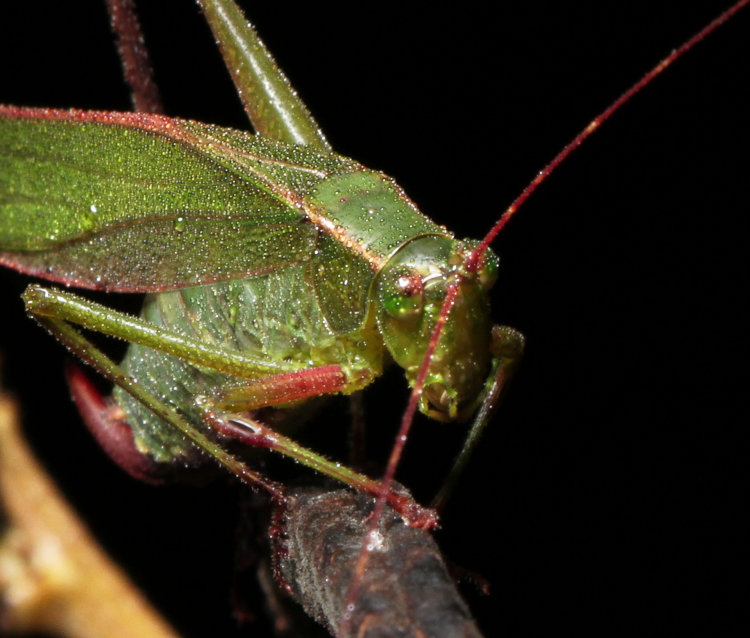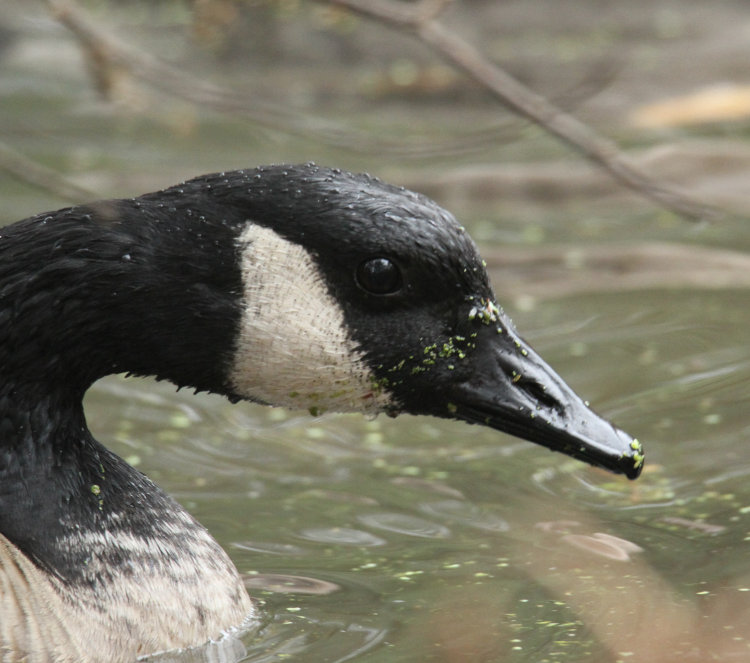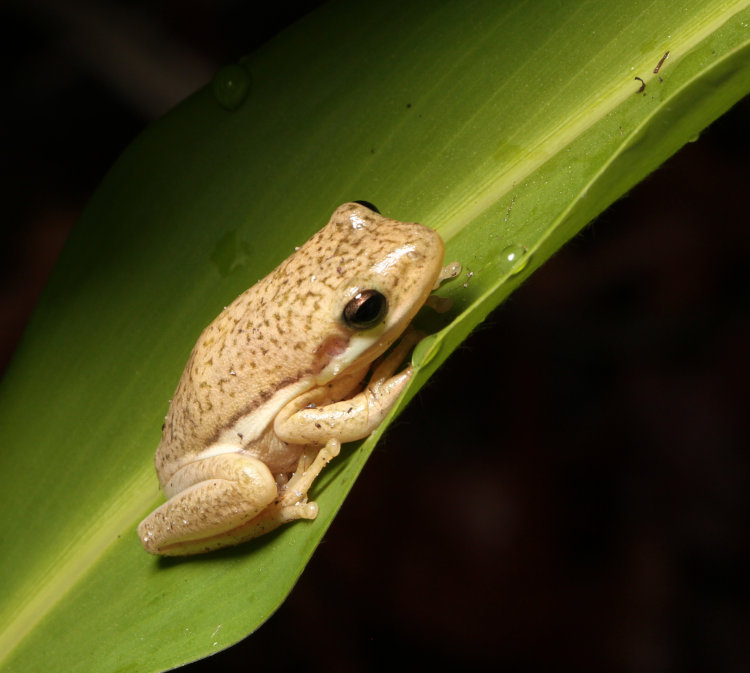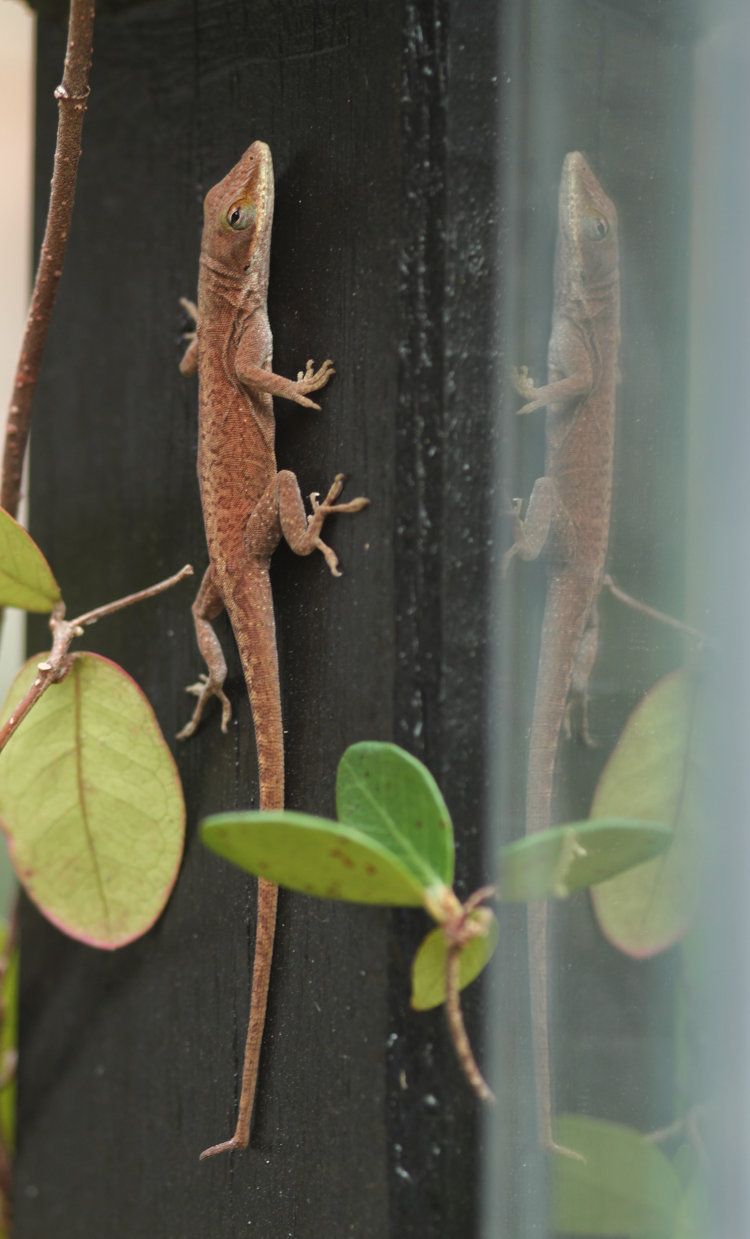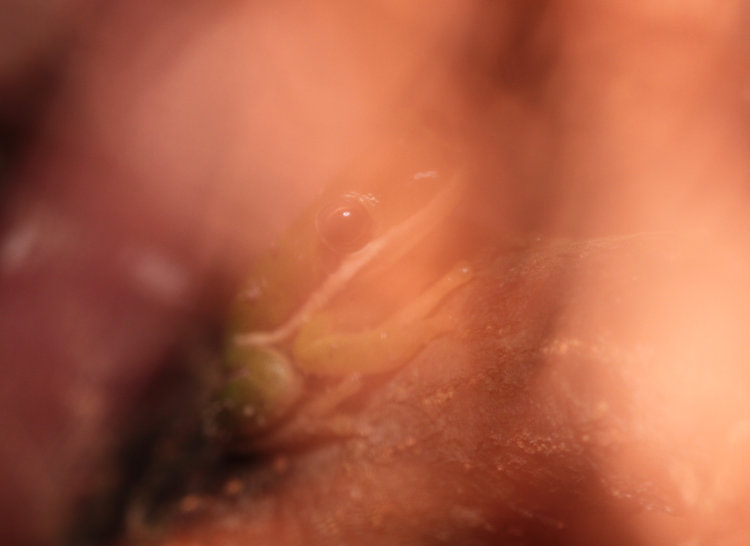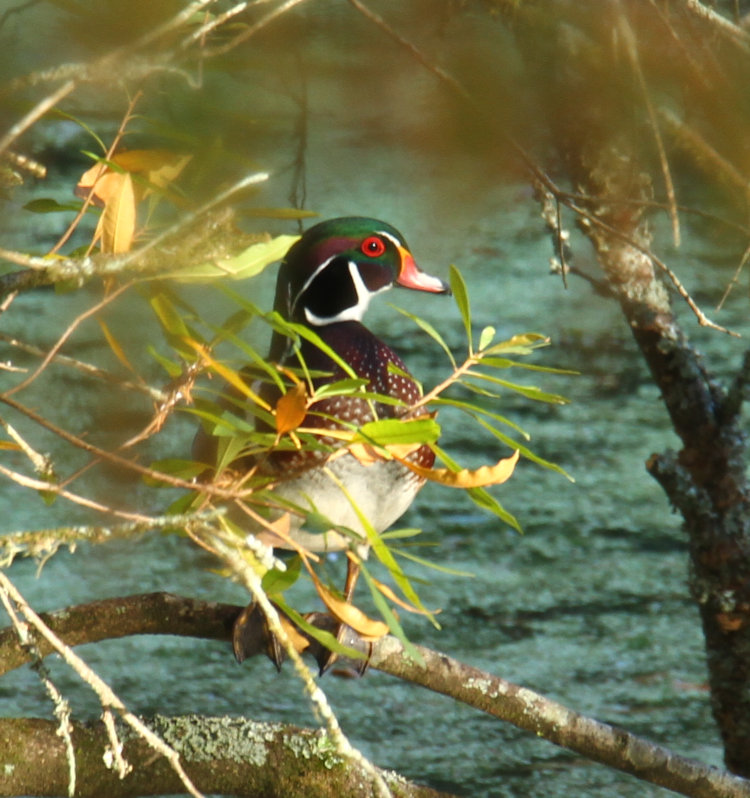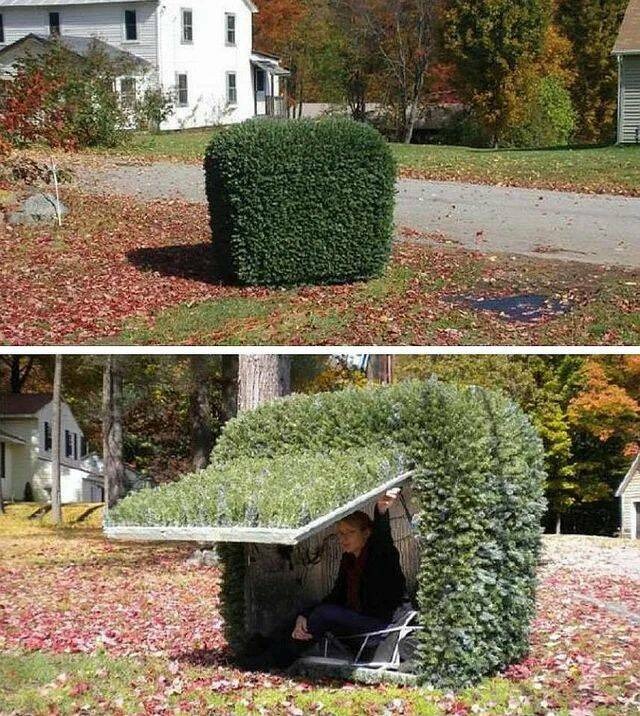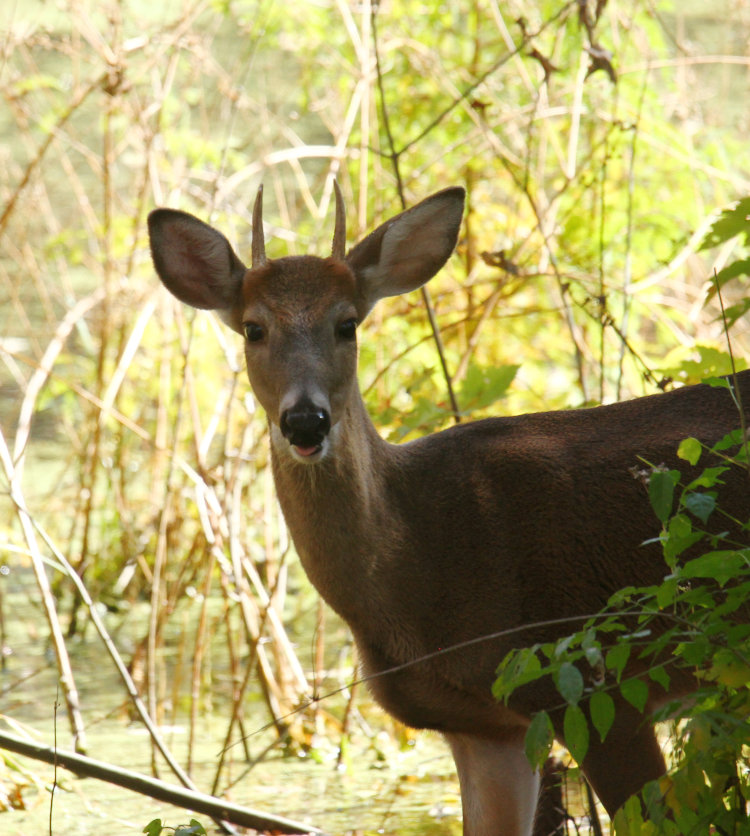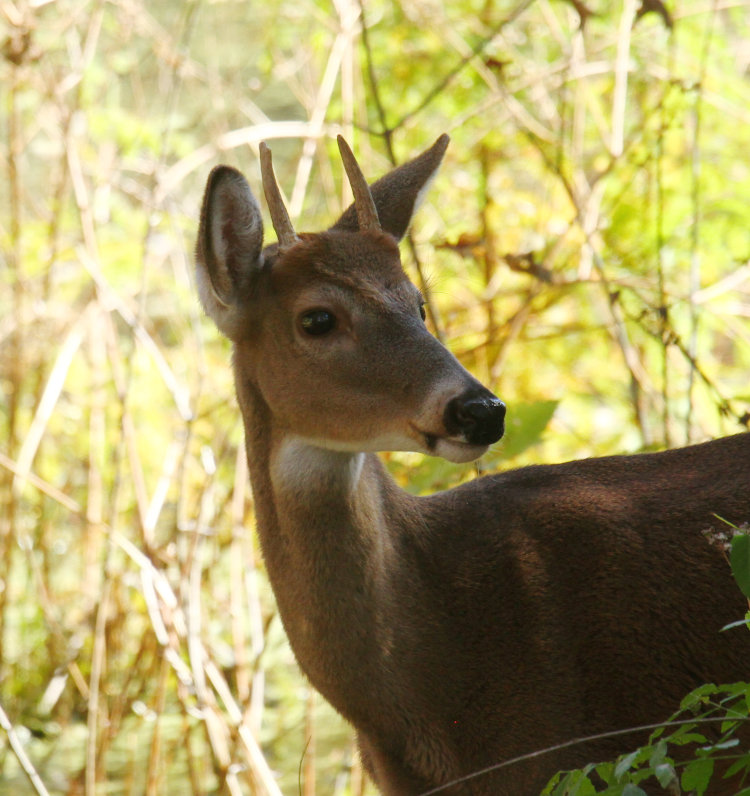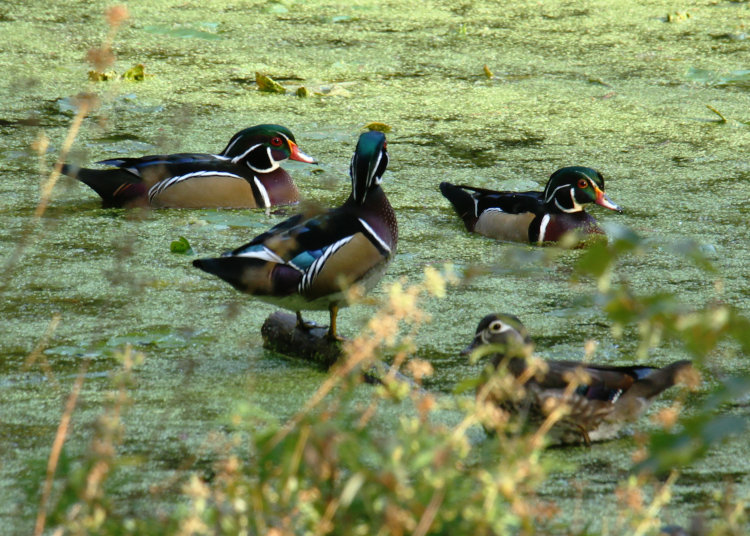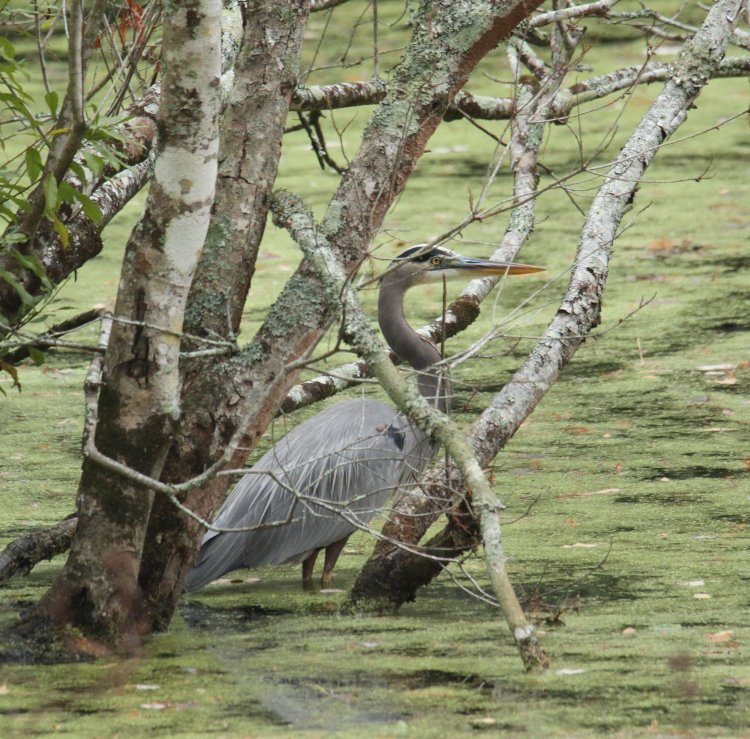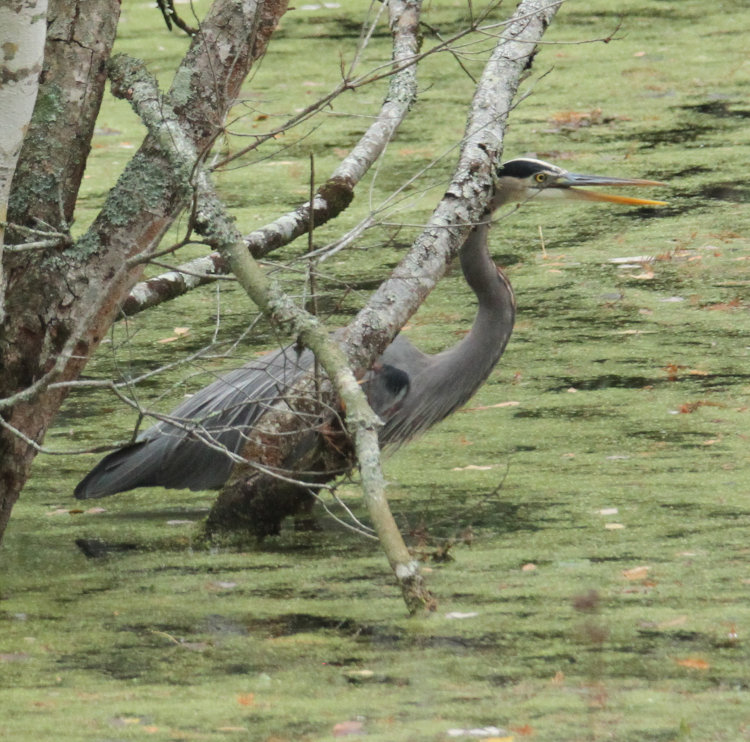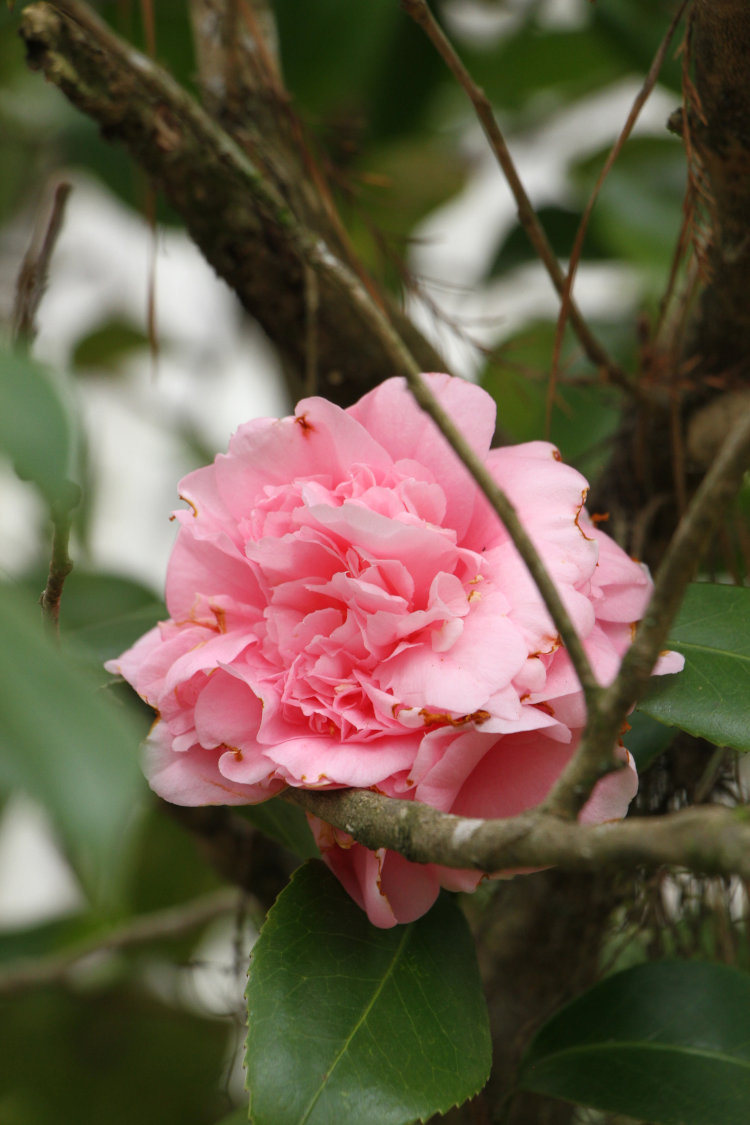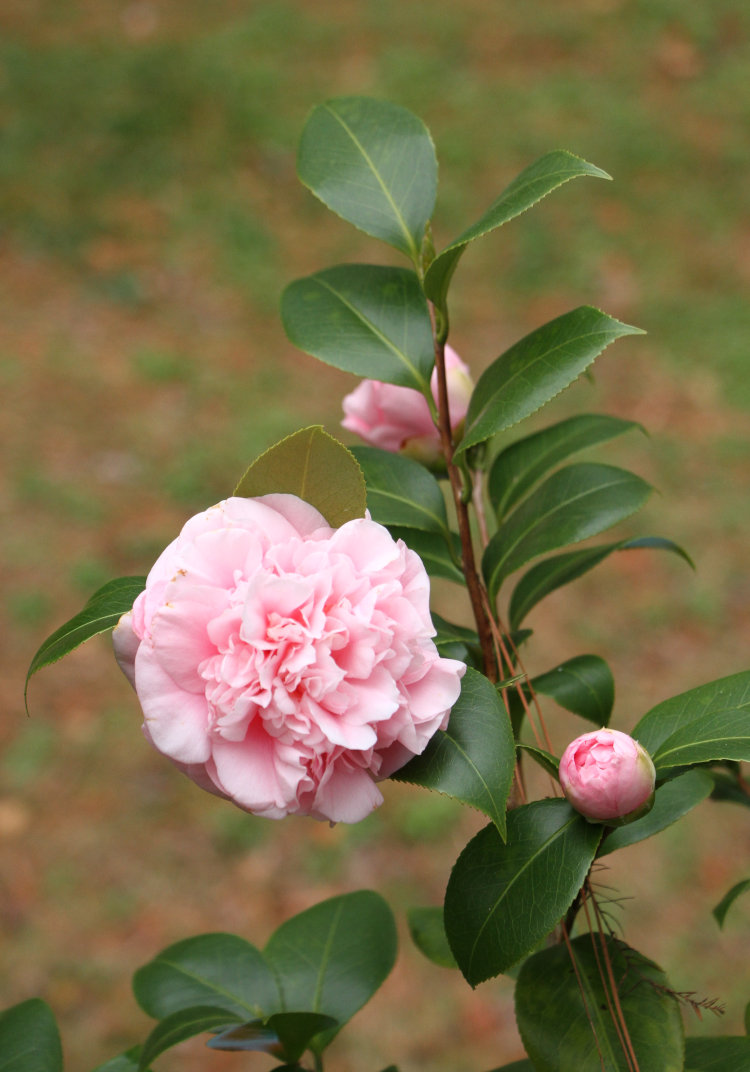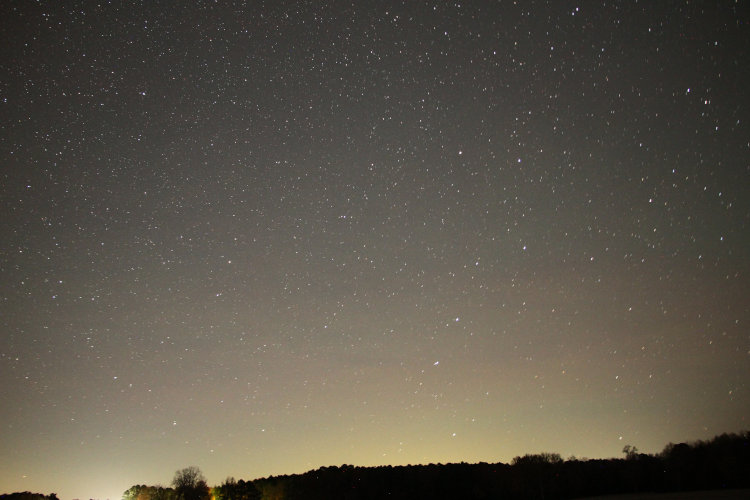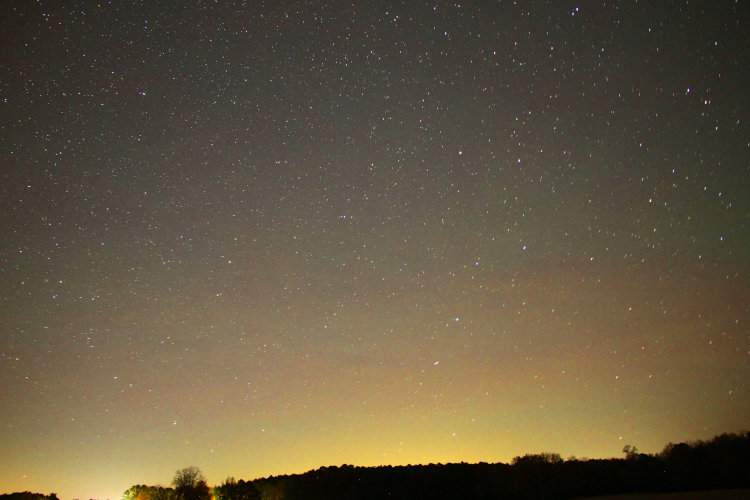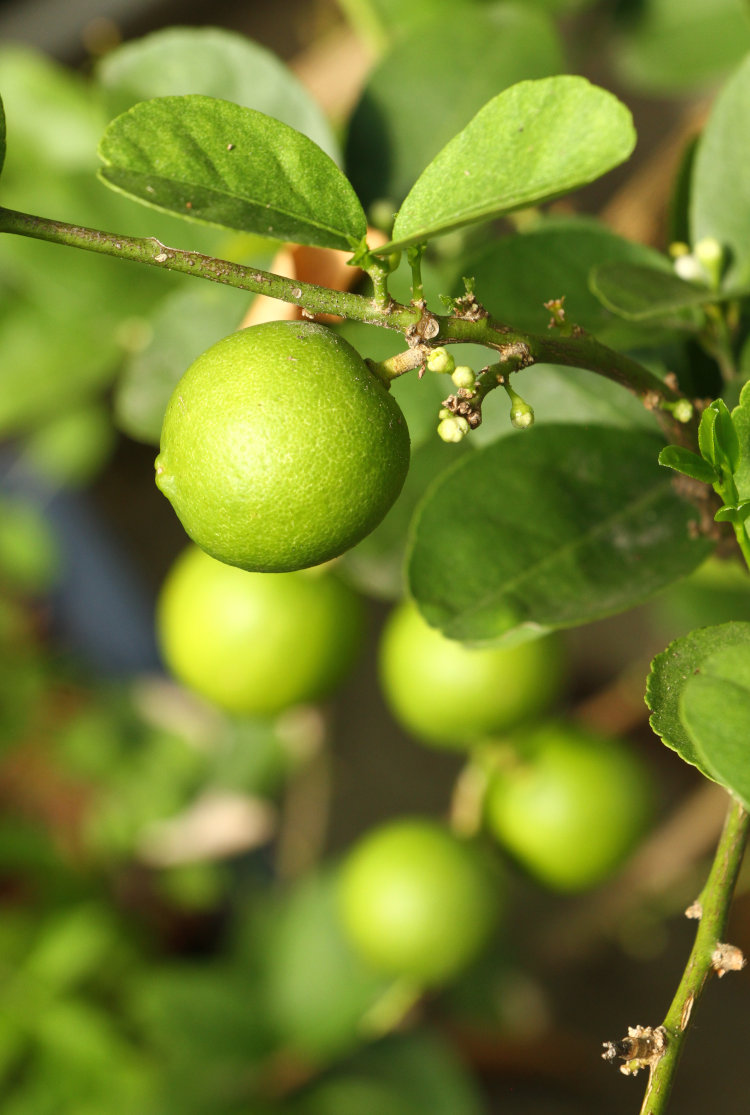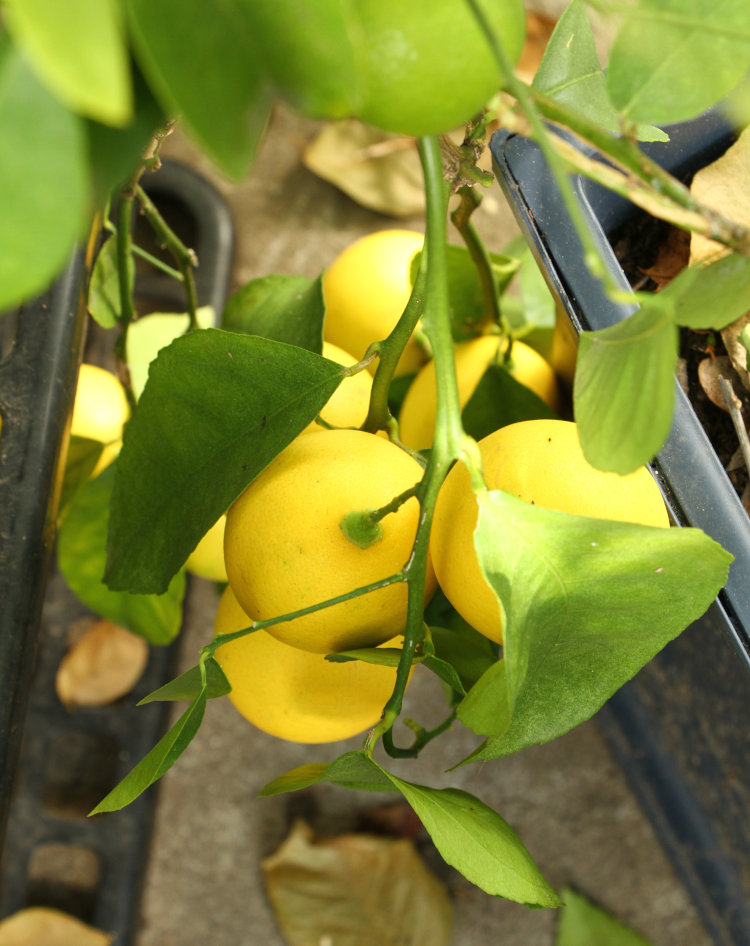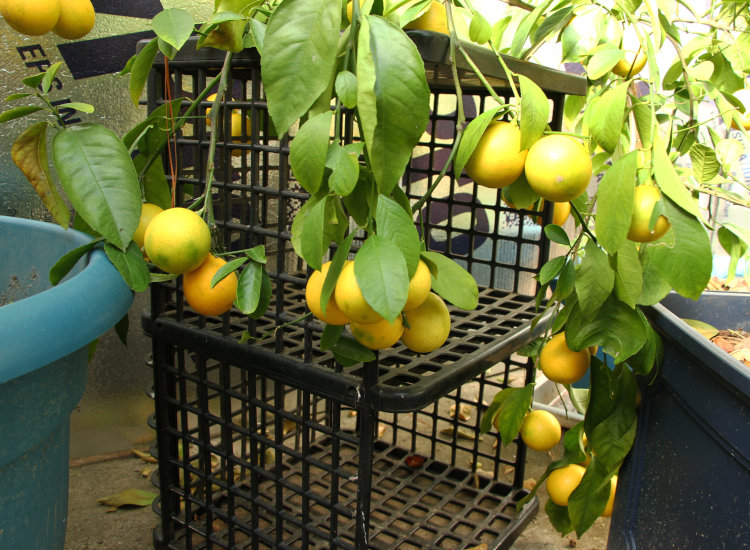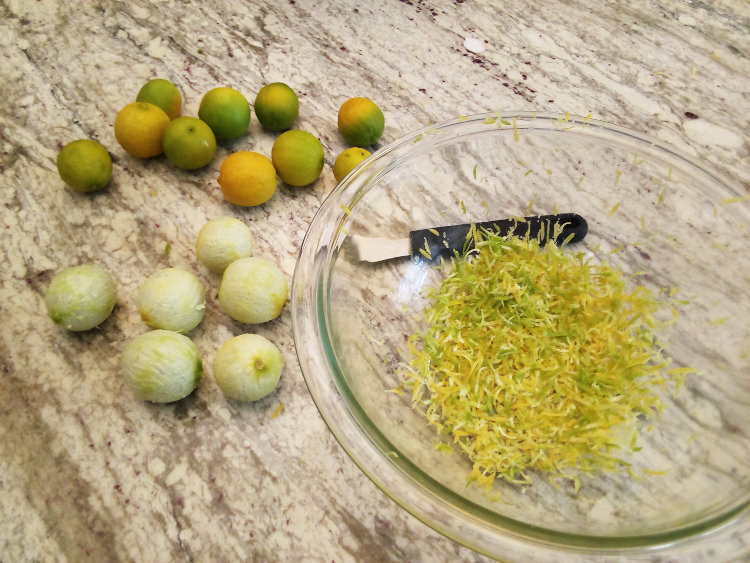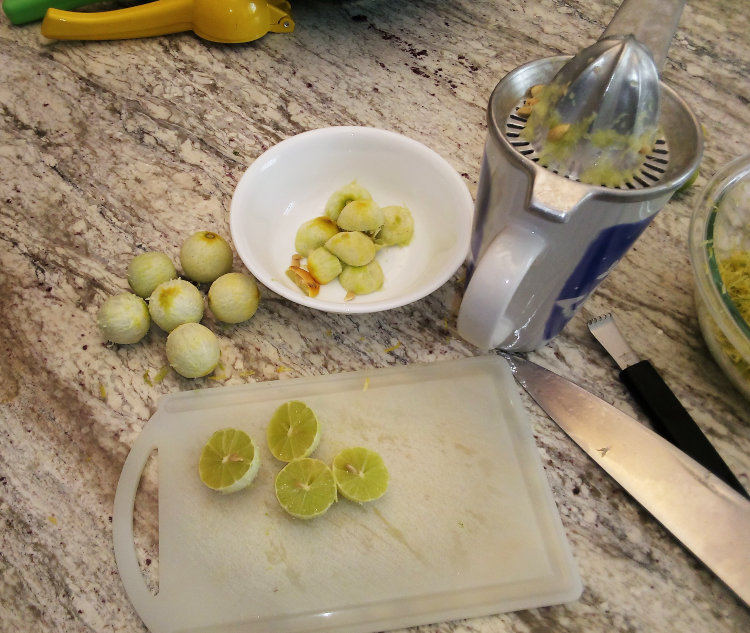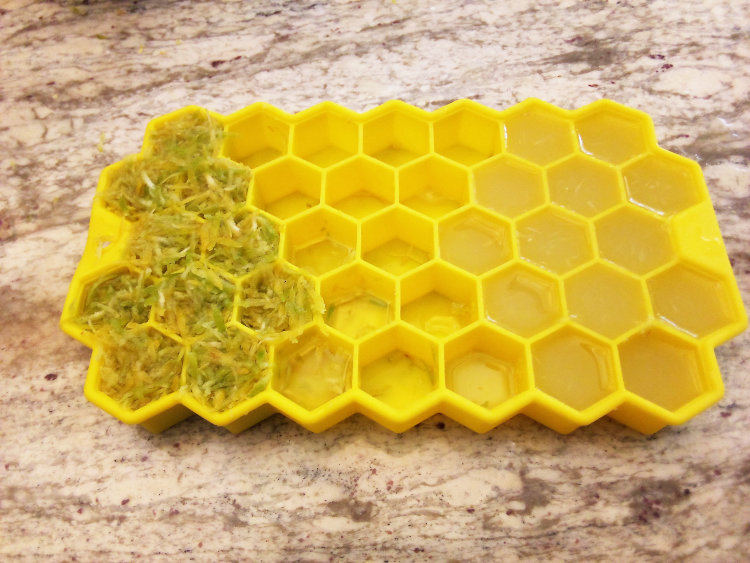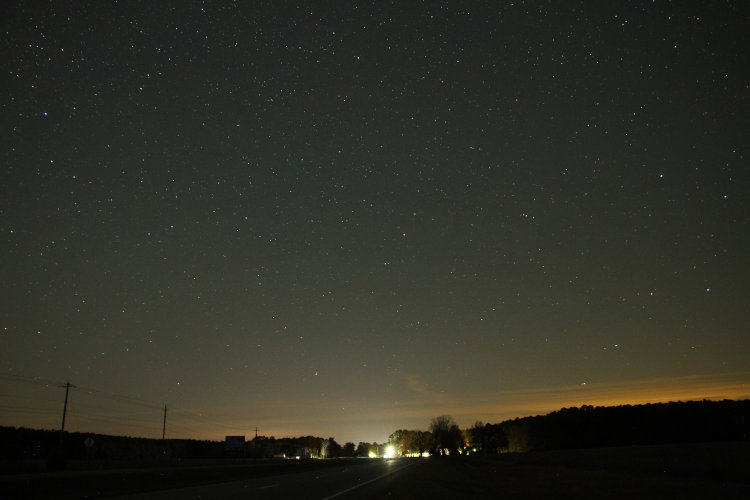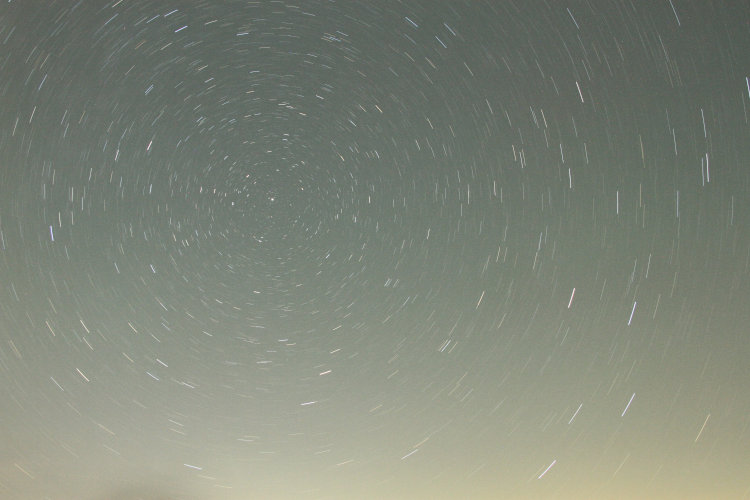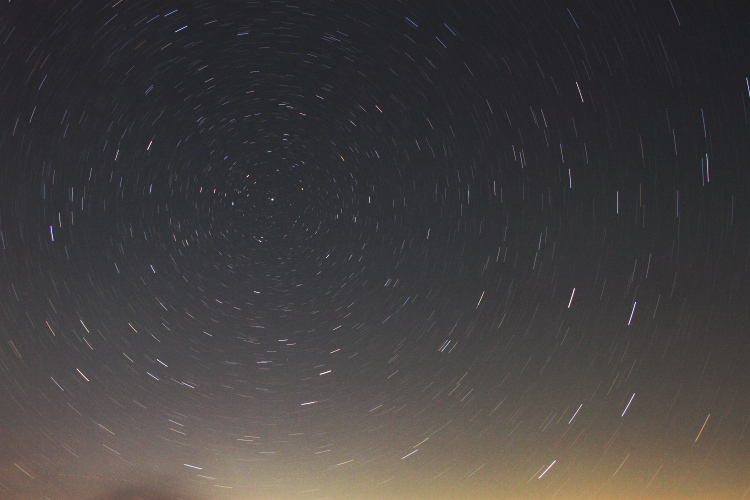The Girlfriend is fond of Japanese maples and we arrived here at the new place (it’s been over a year now, perhaps I should stop referring to it that way) with a few in tow, obtaining several more in the past year, but there were already two established on the property: one perpetually deep red variant up by the mailbox, which has made the occasional appearance here, and the other is a twisted and broad example in the back yard, normally deep green – that’s the one we’re going to talk about now. That’s made several appearances here too, but just recently it hit peak fall coloration and I made a study of it on two separate days. We’re gonna see a lot of red.
The first (which was the 20th,) it was overcast and showing no signs of breaking up, so I worked with the low-contrast grey sky conditions.

There’s nothing for scale here and so it’s a little deceptive, since the tree is nearly three meters tall, contrasted here against the bald cypress trees which have now dropped nearly all of their needles (or whatever you want to call them – they’re more like fern fronds.) While the Japanese maple is quite healthy, it has a couple of branches that are dead and so devoid of leaves even in high summer, which I chose to focus upon for a few frames.
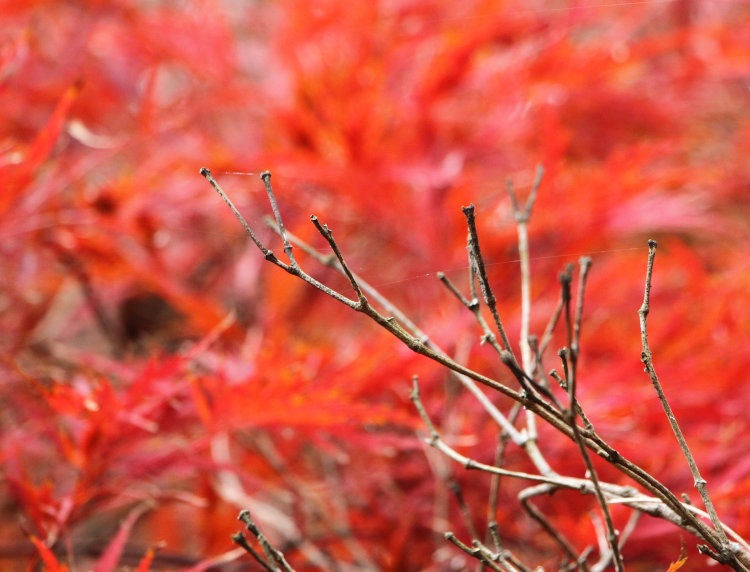
It is, of course, the same tree in the background, so this is comparing it against itself. I have to note that I went to manual focus for this, since autofocus wanted to ignore the branches and focus upon the background leaves instead.
It also would have messed with this next one, so manual again for this:

The Canada geese are still regular visitors, often hanging out for hours, so it’s not too hard to incorporate them into images.
The branches of this tree are very evocative, twisting around almost randomly, but the thick canopy of foliage that the tree produces obscures this from many angles, yet I still had to snag some examples of this:
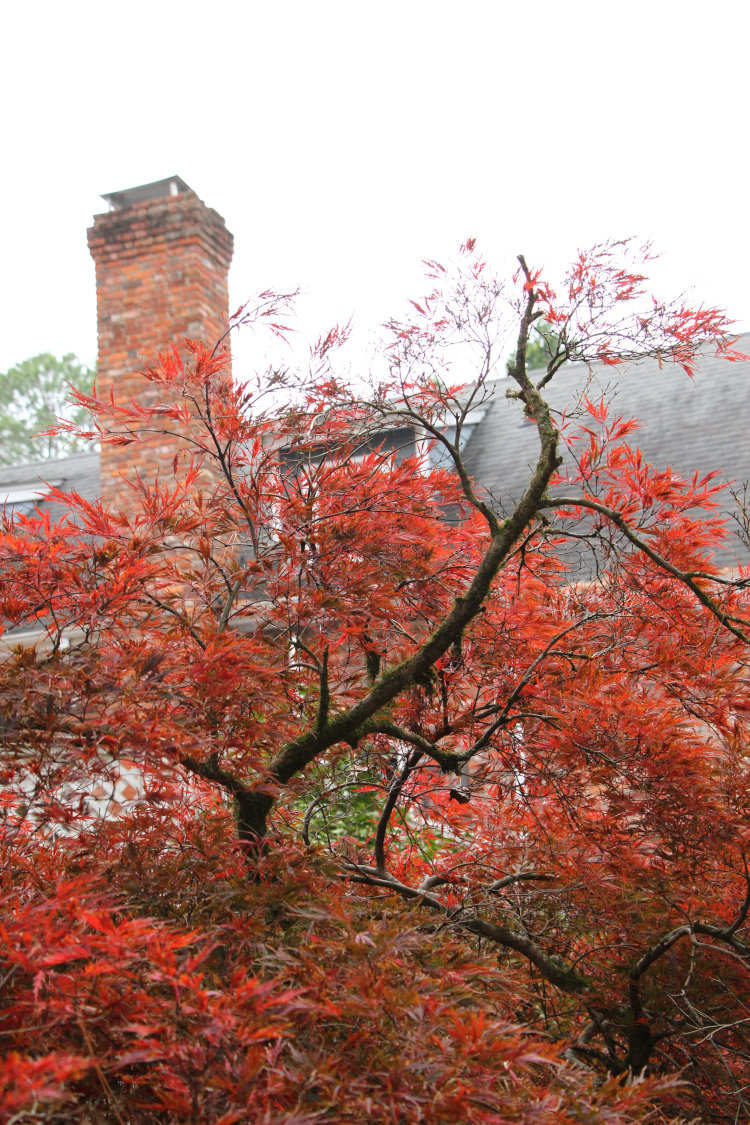
That’s Stately Walkabout Manor in the background of course, with the bathroom window that I use for shooting the wood ducks obscured in the center. There were some other angles, but the brightly-colored kayaks would have been coming through in the background and I wasn’t motivated to drag them across the yard to get out of the pic.
Now we go two days later when the sun had come back out.

Now the tree was virtually glowing, so of course I was revisiting some of the compositions I’d done earlier, as well as chasing some new ones.
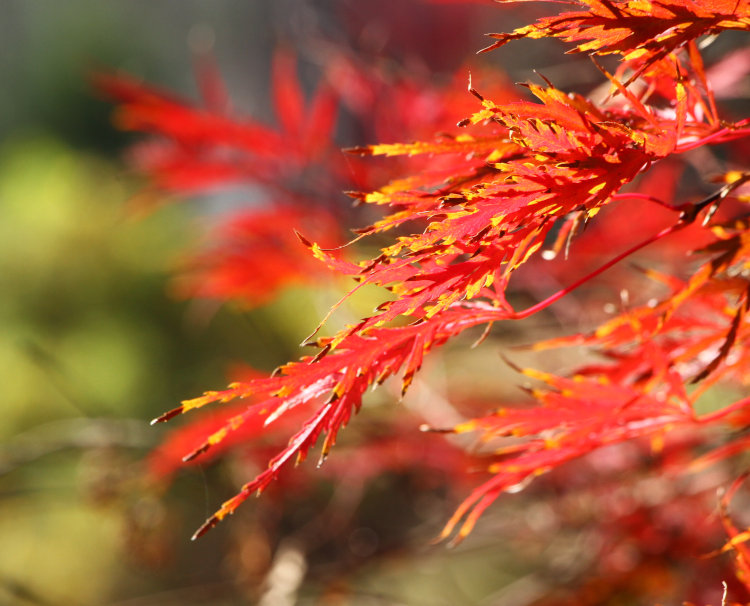
I’m obligated to point out that there isn’t a lot of green foliage around anymore, and I purposefully sought an angle to get one of the few patches aligned for the background. Meanwhile, the short depth-of-field keeps focus just on the few leaves right in front of us.
That was sticking with the leaves that were catching the sun, which was still scattered from trees that weren’t entirely bare and just their trunks blocking the light. So when I reframed the geese, that little ‘keyhole’ that I was using wasn’t actually catching the light of the sun, and neither were they.

For some reason, this has more of a secretive, peeing-Tom feel than the previous, at least to me. Both times I waited until at least one goose was standing tall in my chosen opening, as unobscured as possible even by the weeds much closer to the geese. There remains a chance I’ll construct a blind under this very tree to watch the geese and wood ducks (speaking of Pepping Tom again,) because I think I can use the tree itself to hide my approach, slipping under that little gap you see in the wider pics.
And the Manor again:

Slightly different angle this time – I couldn’t quite recall how I’d shot the previous version two days earlier. Different window in the gap now, and the branches are still a bit too shaded. Ignore the kayaks down there.
[Had you even seen them? I should have kept my mouth shut.]
About two hours further on, the sun angle was even better, and I tackled it again.

This is about the most direct sunlight that the tree can receive, at this time of year anyway. The surrounding trees will get a little barer, but then again, so will this tree, so I’m going to consider this the best overall color display to be available all year – even when it leafs out in the spring, the leaves are fairly deep green, not as bright as some other varieties. And with the sunlight in the correct position now, it was time to revisit the keyhole yet again:

The problem at this time was, now the geese were nowhere to be found initially. And then one appeared, but remained in deep shadow for a while before finally coming out into enough light to stand out against the now-bright leaves of the tree. But scroll up and compare the brightness of the water in the previous two pics to this one, and you can see how sun angle can affect just how your subjects are rendered.
 It may seem counterintuitive, but direct sunlight can often work against you for brighter colors, and at the very least can change the way your subject and background appear. Direct sunlight produces brighter highlights that the camera meter adjusts for, making the shadows seem much darker, but also changes color subtly. It can also cause the highlights to bleach out too much and actually weaken the color, whereas a hazy or light overcast day may display them much better. This gif (pronounced, “GEE-wiz-WIL-eh-kers“) only demonstrates this slightly, but I was right there as the sun went in and out of a cloud and so shot the frames in close succession. Look closely at the highlights on the leaves right in the center, but also note how the background colors change. Ignore, however, the blotchiness of said background, because this is an artifact of gif formatting and not present in the original images.
It may seem counterintuitive, but direct sunlight can often work against you for brighter colors, and at the very least can change the way your subject and background appear. Direct sunlight produces brighter highlights that the camera meter adjusts for, making the shadows seem much darker, but also changes color subtly. It can also cause the highlights to bleach out too much and actually weaken the color, whereas a hazy or light overcast day may display them much better. This gif (pronounced, “GEE-wiz-WIL-eh-kers“) only demonstrates this slightly, but I was right there as the sun went in and out of a cloud and so shot the frames in close succession. Look closely at the highlights on the leaves right in the center, but also note how the background colors change. Ignore, however, the blotchiness of said background, because this is an artifact of gif formatting and not present in the original images.
Now we go underneath the tree for some slightly different perspectives.
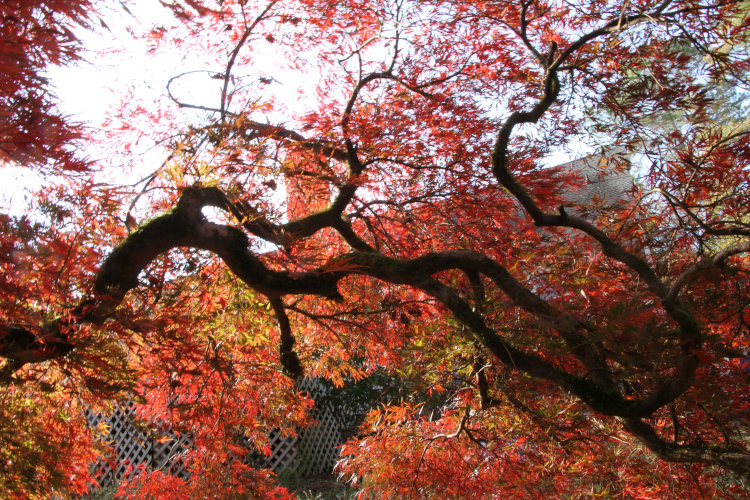
This was capturing a little of the backlighting of the leaves, and also shows that some of them under the main part of the canopy are still green. This branch is quite low and is actually one that appears in the previous two images that show the house, not the main subject, but down low to the right. Unfortunately the heavy moss that adorns it doesn’t show too well from this angle.
And finally,

Aiming more south into the sun now, which is peeking in from the upper corner, but now we get more backlit leaves and the stark shape of the main trunk – I probably should have tackled this same approach some time in the summer, and will have to make a point of it next year. None of the branches are ‘high,’ but they’re higher here and this is where I’d make the blind because I could at least sit upright comfortably – just, not in an actual chair. Of course, with these leaves getting ready to drop off, I’d lose half of my blind cover for the season, so perhaps this isn’t the best choice after all. But for now, we have another burst of fall color and fartsiness before they all go away.
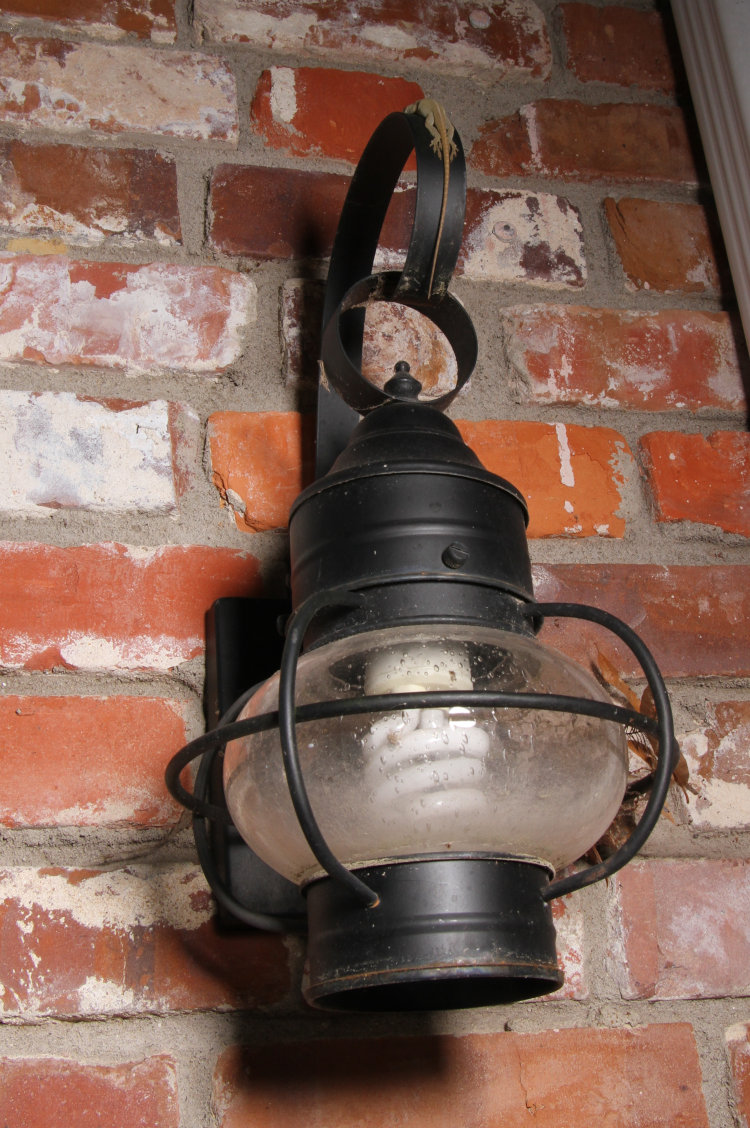

































































 It may seem counterintuitive, but direct sunlight can often work against you for brighter colors, and at the very least can change the way your subject and background appear. Direct sunlight produces brighter highlights that the camera meter adjusts for, making the shadows seem much darker, but also changes color subtly. It can also cause the highlights to bleach out too much and actually weaken the color, whereas a hazy or light overcast day may display them much better. This gif (pronounced, “GEE-wiz-WIL-eh-kers“) only demonstrates this slightly, but I was right there as the sun went in and out of a cloud and so shot the frames in close succession. Look closely at the highlights on the leaves right in the center, but also note how the background colors change. Ignore, however, the blotchiness of said background, because this is an artifact of gif formatting and not present in the original images.
It may seem counterintuitive, but direct sunlight can often work against you for brighter colors, and at the very least can change the way your subject and background appear. Direct sunlight produces brighter highlights that the camera meter adjusts for, making the shadows seem much darker, but also changes color subtly. It can also cause the highlights to bleach out too much and actually weaken the color, whereas a hazy or light overcast day may display them much better. This gif (pronounced, “GEE-wiz-WIL-eh-kers“) only demonstrates this slightly, but I was right there as the sun went in and out of a cloud and so shot the frames in close succession. Look closely at the highlights on the leaves right in the center, but also note how the background colors change. Ignore, however, the blotchiness of said background, because this is an artifact of gif formatting and not present in the original images.

